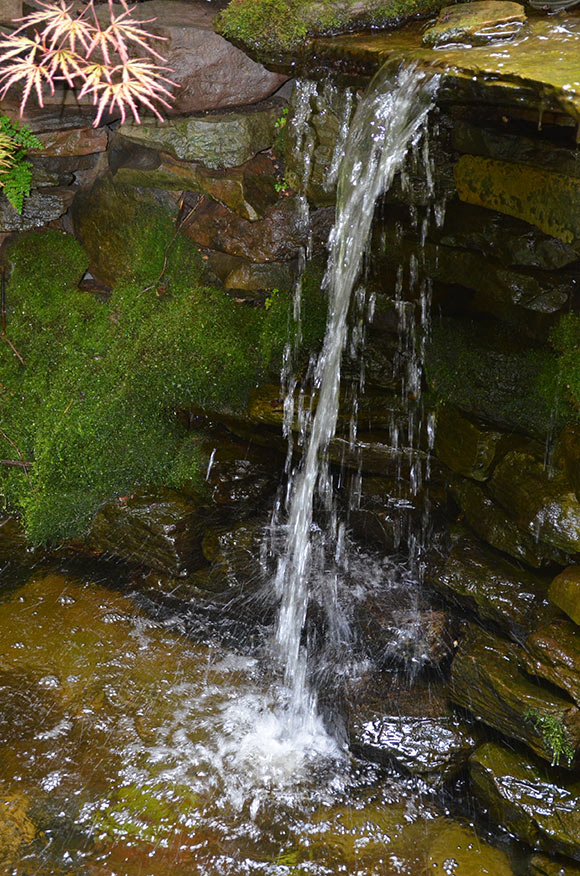Dear clients and Friends,
One week of blinding heat and no rain, and the Tulip Poplars are already dropping leaves like it’s early Fall. This is always the first sign here in my yard, and I always feel a tiny little twinge of regret. We are on the downswing. Many, many hot days are still ahead, though the days are getting shorter, slowly, and the sun is weakening. We are now into a time of year that can be tough on our gardens (the other time is the dead of Winter), and we’ve got to get our gardens through this time and into Fall. Enjoying it along the way, hopefully, of course.
Watering. After all the rain we’ve had this Spring and early Summer, it seems impossible that we’d even need to talk about watering—yet here we are. Right on schedule, we are drying out again, and it will likely remain this way until late September or early October, unless we have a hurricane (let’s hope not).

If you have new shrubs and trees that were installed within the last year or two, and you have a sprinkler system, don’t depend on the sprinkler system to do a proper job of watering your newer plants. Irrigation systems are great for established gardens, lawns, and shallow-rooted plants, but you’ve got to deep-soak your new things, especially when the temperatures are above 90˚F and we haven’t had rain for awhile. Here are some further notes:
When trees are rooted and growing leaves, they are taking up water from the ground. It's like suction (and much like our sweating): the leaves "sweat", and in the process, pull the water from the ground with the roots, up through the plant, and out through the leaves. This is called transpiration. The hotter, drier, and sunnier the weather is, the faster the transpiration, thus the increased water need. It's like a continuous loop of water drawn in and sweated out. When the days shorten in the Fall, plants anticipate the coming cold weather, drop their leaves, and go dormant. Evergreens just go dormant, of course—all plants just stop growing from the ground up. Roots will continue to grow until the ground temperature gets below around 40˚F . This is all very simplistic, of course—so much more is going on, but you get the drift.
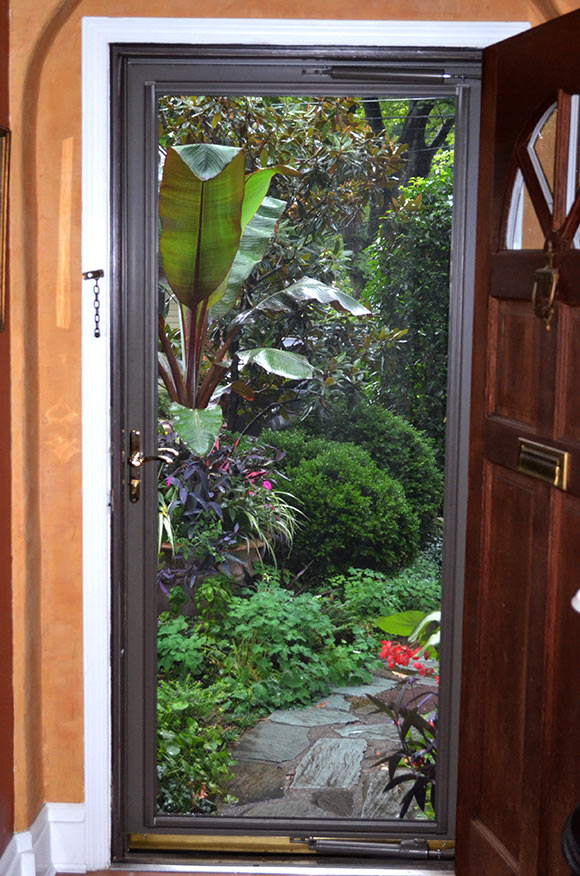
Things are different when a plant is first planted. That's because they take time to root—in other words, the little feeder roots that take up the water from the surrounding soil have not yet come from the rootball of the transplanted plant and established themselves into the surrounding soil. So we have to baby them for a few weeks until this happens. Too little water, and they drop their yellowing leaves as a defense mechanism because they are trying to conserve water in the stems. When water is available again, they have the strength saved up to leaf out again. Conversely, when too much water is around the roots and the rootball cannot get any oxygen (because this is important, too), the plants generally hold their browning, water-soaked leaves because they don’t need any water and their systems shut down. Both under- and over-watering are really easy to do after plants are just put in—there is a fine balance. Believe it or not, more plants die of overwatering than under watering. Isn't that crazy? But it's true.
As the days shorten, and the sun becomes less intense as we move towards Fall, your plants will require less and less water—you can probably cut the frequency a bit. Likewise, plants dry out more quickly when the humidity is low; less quickly when the humidity is high. Monitor carefully so you don’t over- or under-water. Just remember to soak deeply when you do water.
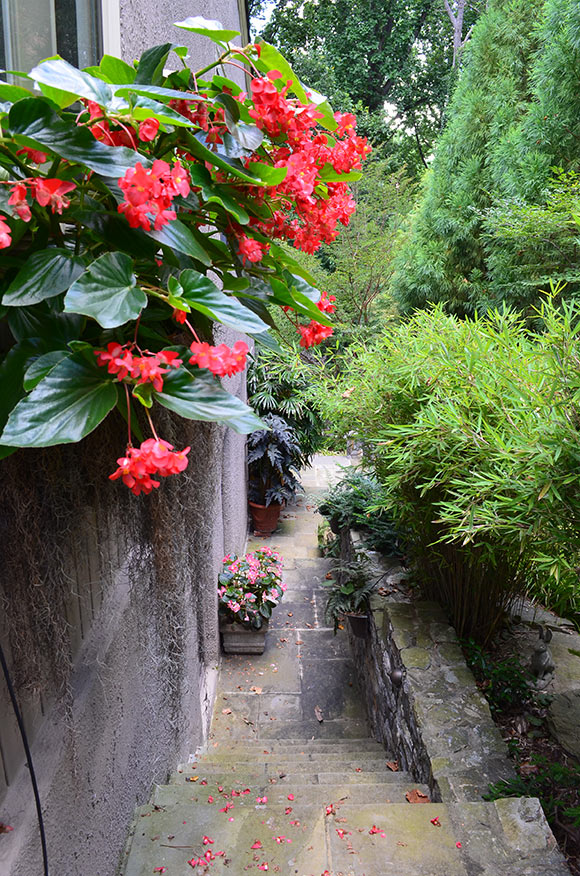
Get to know your garden and its “hot spots”—places that dry out more quickly than others. This is true even if you have an irrigation system. Put your fingers under the mulch, into the soil, and check for moisture. Don’t depend on a quick thunderstorm to water for you—deep soak your garden as needed. Let the lawn go dormant or provide one inch of water per week to keep it green. If hand–watering your plants, take the nozzle off the hose, and aim that nice, steady stream of water directly at the center of the plant where it meets the soil. Let the water soak in deeply. When using sprinklers, rain gauges are a big help—or (better) check the soil with your fingers. And remember: like winter-damaged plants, those left unwatered are not guaranteed—another incentive to get out the hose!
Weeds. Ugh. I know, I know—it’s too hot, too dry, there are too many—etc. etc. Really, though, you must get to them before they go to seed or you are really going to have your work cut out for you. At the very least, go out and cut off those seedheads before they ripen and fall!
I find that the best time to pull weeds is after a good rain or just after I’ve watered. The weeds slip right out of the ground, for the most part, except for a few stubborn ones; then, I have to get out the pointed trowel (a wonderful tool) or a dandelion weeder. I’m looking now for a shorter version of the dandelion weeder—just want a handle with a stub for weeds that just need a nudge. Anyone seen one of those?
After you weed, you can put down some mulch to cover the bare ground if your garden needs it—it helps to control weeds and helps keep the soil from drying out so quickly.
Pruning. Camellias, Azaleas, Rhododendron, Forsythia, Spirea, Quince, Lilac, etc.—all the Spring bloomers are now setting buds, so pruning now will limit bloom next Spring. In other words, you will be cutting off the buds. Finish pruning your Hydrangeas ASAP—mophead, lacecap, oakleaf—once they’ve finished blooming. Here in my own garden, all the major pruning is finished for the year. I clip here and there only when needed.
Fall bloomers are budding and lining up for bloom: Turtlehead (Chelone), Asters, Mums, Fall Anemones, perennial Begonias, and others. Goldenrod, Tea Olive, Toadlily, and Fall-blooming Camellias will end the show just before the leaves begin to change color.
A Wedding. I have a big secret. For 16 years, since I’ve been in this house, I’ve dreamed of a wedding in front of my waterfall. Last year, a young couple very dear to me called. They said, “Do you know of any good venues for a wedding around D.C.?” Most of the bride’s family lives in Wilmington, NC, and most of the groom’s family lives in Chicago. They thought Washington was a good middle ground and, since they planned to marry Memorial Day weekend, they thought everyone could make a long weekend out of it and do some touring around the area.
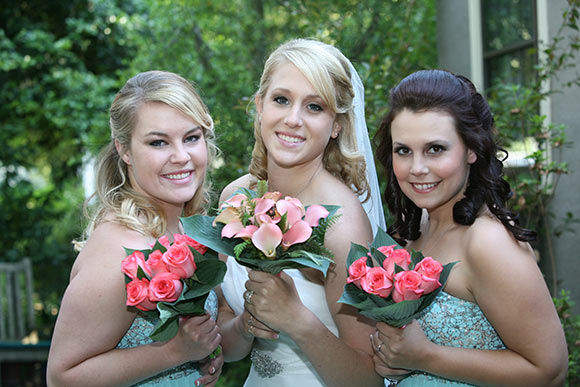
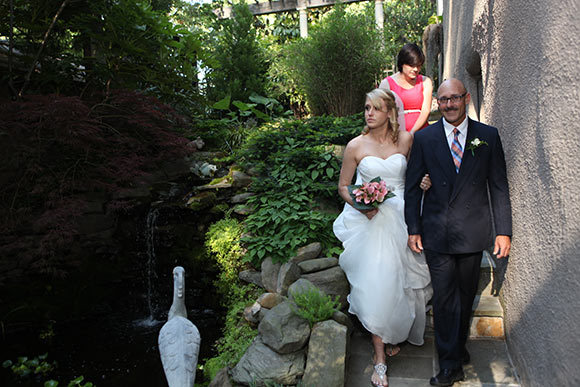
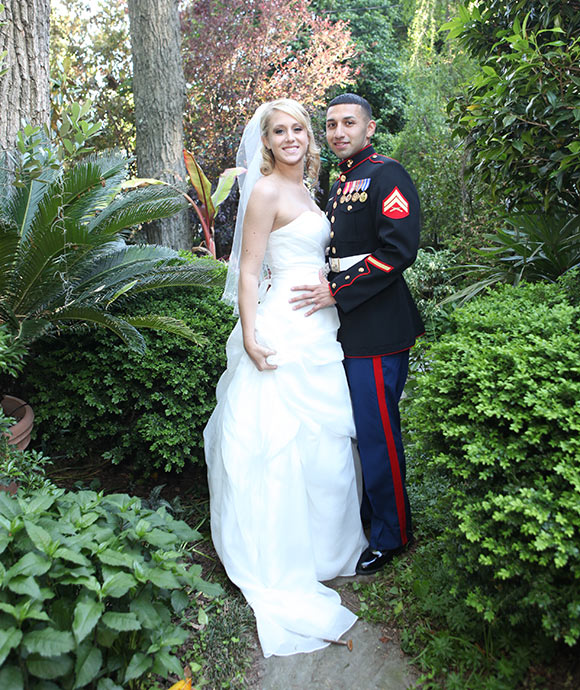
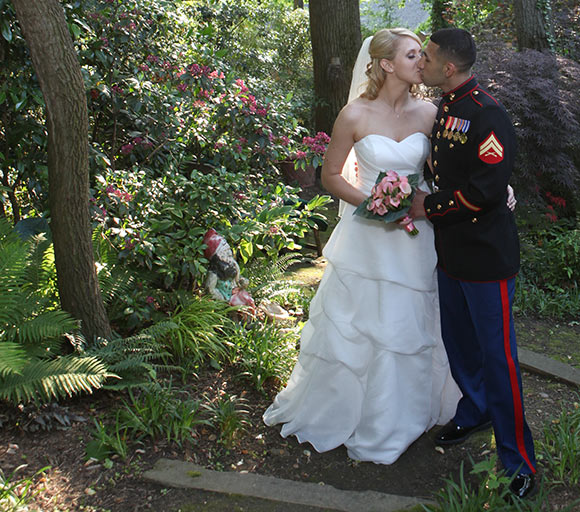
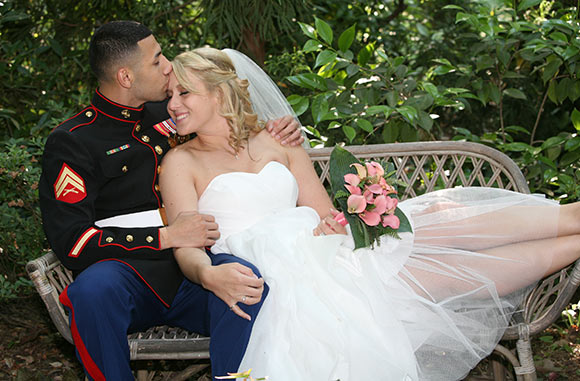
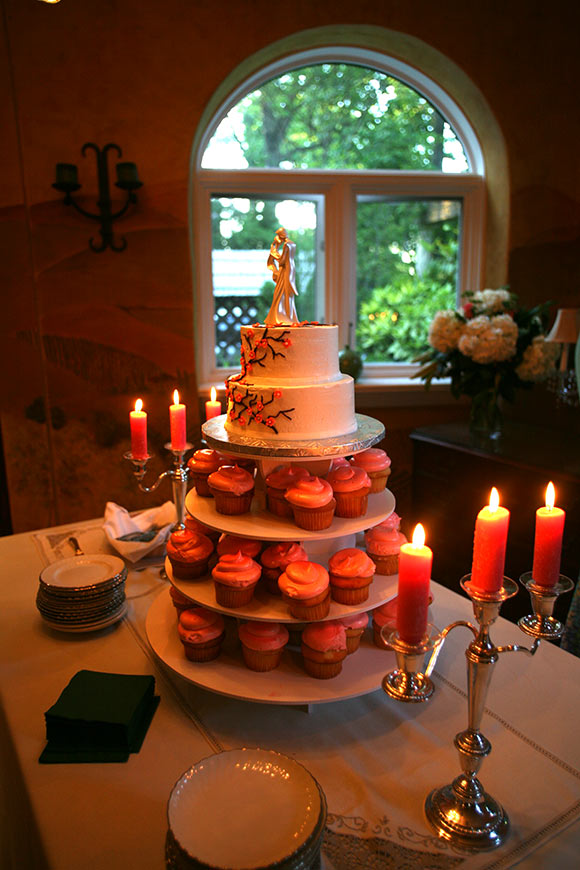
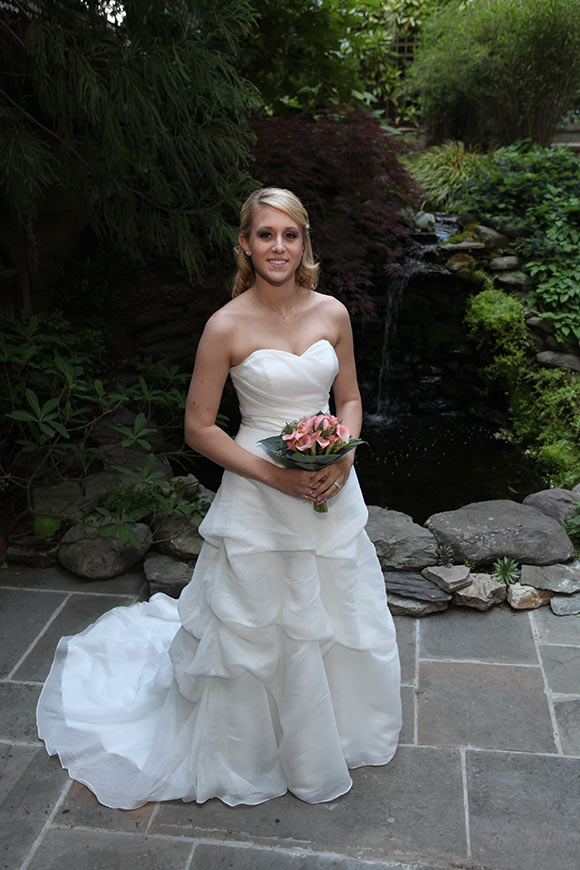
I thought about it for a minute (if that), and said, “How many guests are you planning on?” They said the guest list would be very small, just family and their very closest friends. “About thirty,” they said.
I said, “Why don’t you all have it here? You can get married by the waterfall. We can set up tables and have the reception outside.” They said they’d think about it.
They called back and said they’d love to have it in my garden. We put our heads together and decided Saturday, May 25th was a good day, and we’d begin at 5pm.
We all know it can be freezing cold or boiling hot Memorial weekend in Washington—Spring this year was cold and wet (how quickly we forget). The garden was lush and beautiful. Still, I was concerned about the weather. My back-up plan was in place: vows by the fireplace, and everyone would just have to spread all over the house and make themselves at home (the buffet was in the dining room, one way or another). We’d make the best of it, either way. Actually, both scenarios occurred—the weather cleared the morning of the wedding, so the couple said their vows by the waterfall and we ate outside. By sunset, a cold front was starting to blow in and it got too chilly to be outside. We cut the cake in the dining room and just hung out all over the house. It was perfect, and we all had so much fun. Everyone looked so gorgeous in that late Spring light—what a day. Great memories and another chapter in the history of this old house.
Have a good Summer, and let me know if you need anything for the Fall season. I’ll be away the second half of August into early September, as usual.
Best regards,

Wedding photographs by Ruben Gamarra, www.rubenphotography.com.
All other photos by the author

